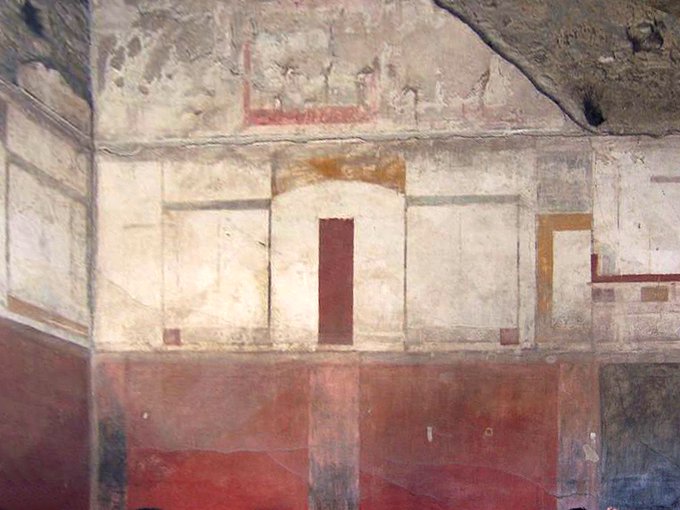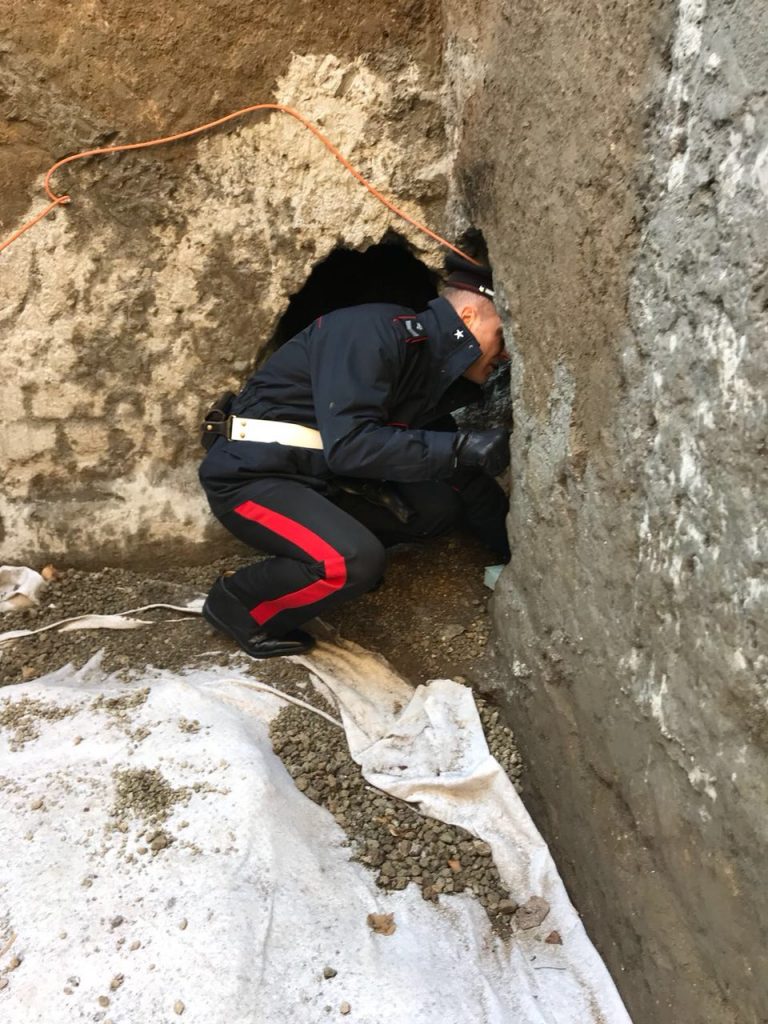
#Abrohilo 🧵¿Me acompañas de visita por Pompeya? Hoy vamos a visitar la Casa de los Ceii en la ciudadde #Pompeya. Imagina que nos adentramos a la ciudad por el sur, por la Puerta de Estabia, y nos desviamos hacia la derecha a la altura del templo de Esculapio ... 



La Casa de los Ceii está localizada en al región I, ínsula VI y colinda con parte de la Casa del Criptopórtico. Su accesso se abre a Vicolo del Menandro, que recibe su nombre por la cercana Casa del Menandro. Fue excavada entre 1913-1914 y destaca por su estado de conservación 

Su fachada, decorada con paneles de estuco blanco imitando sillares y capiteles cúbicos en su entrada nos permite apreciar uno de los escasos ejemplos de viviendas samnitas de la ciudad (siglo II a.C.). Decorada con un rodapié rojo y con un banco corrido en uno de sus lados... 

en la fachada también se hallaron numerosas pintadas electorales y grafitos, entre los que solo se conservan algunas como esta: "C(aium) Cornelium
aed(ilem) Tyrsus [ro]gat" (CIL IV 7190). Se cree que la casa pudo pertenecer a "Lucius Ceius Secundus"
aed(ilem) Tyrsus [ro]gat" (CIL IV 7190). Se cree que la casa pudo pertenecer a "Lucius Ceius Secundus"

Aquí os dejo unas imágenes antiguas publicadas por
@pompeii_sites
@pompeii_sites
https://twitter.com/pompeii_sites/status/1329474945232089088?s=20&t=ETAGIZsff7tQXVDFOsfWbw
La casa posee una única entrada en rampa que dirige al atrio a través de un vestíbulo. Hoy en día puede apreciarse el calco en yeso de la impronta dejada por la puerta de acceso a la vivienda 



El espacio está organizado en torno a un atrio con un impluvium realizado con fragmentos de ánforas, una técnica principalmente usada en Grecia. Junto al impluvium había una aljibe y una mesa de mármol. Al atrio abrían una serie de estructuras entre las que destacan dos escaleras 



hacia el piso superior y una cocina con letrina, además de otras estancias. El vestíbulo y el atrio están decorados con siguiendo el tercer estilo pompeyano, con zócalo, alternancia de paneles negros y rojos, un friso superior de paneles blancos y motivos arquitectónicos 







Quizás lo más impactante de esta vivienda es la zona trasera, organizada en torno a un jardín al que se abren diversas estancias. El jardín está decorado siguiendo el IV estilo pompeyano, con un friso inferior con plantas y pájaros y una escena de caza sobre él ... 

a composición está flanqueada por paneles con escenas de tintes egipcios y otros elementos decorativos. Los muros este y oeste del jardín poseen también escenas nilóticos (pigmeos, cocodrilos, etc.) 







Aquí os dejo unas fotografías de las excavaciones del jardín publicadas por
@pompeii_sites
@pompeii_sites
https://twitter.com/pompeii_sites/status/1329474909718913024?s=20&t=ETAGIZsff7tQXVDFOsfWbw
Uno de los elementos que más me gustan de esta casa son los grafitos de combates entre gladiadores, con los nombres 'Oceanus, Aracintus, Severus y Albanus' sobre su cabeza...
https://twitter.com/pompeii_sites/status/1329474938089123840?s=20&t=ETAGIZsff7tQXVDFOsfWbw
Estos fueron hallados en el muro que abre al jardín trasero, junto al acceso al pasillo que lo comunica con el atrio 



Y hasta aquí nuestro #hilo sobre la Casa de los Ceii en Pompeya, lugar de parada obligatoria en vuestra próxima visita a #Pompeya. ¿Qué casa quieres visitar la próxima vez?
• • •
Missing some Tweet in this thread? You can try to
force a refresh



























